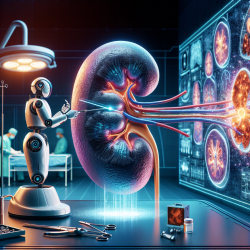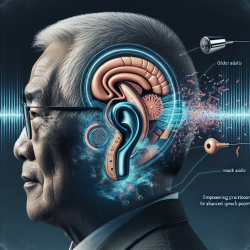Unveiling the Power of New Imaging Technologies in Robotic Kidney Cancer Surgery
As a practitioner in the field of robotic kidney cancer surgery, staying ahead of the curve with the latest technologies is crucial. The recent review article titled "New Imaging Technologies for Robotic Kidney Cancer Surgery" offers groundbreaking insights that can significantly enhance surgical outcomes and streamline the learning curve for surgeons. Let's delve into the key findings and how you can leverage them to improve your practice.
Why 3D Visualization Technology is a Game Changer
One of the standout features of the research is the emphasis on three-dimensional (3D) visualization technology. This technology is not just a tool but a transformative approach to surgical training, patient counseling, and intraoperative guidance. Here's how it can benefit you:
- Enhanced Training: 3D models offer a realistic simulation environment, allowing surgeons to practice complex procedures without the ethical and financial constraints of traditional methods.
- Improved Patient Communication: 3D models can help patients and their families better understand the surgical process, leading to more informed decision-making.
- Accurate Surgical Planning: By providing a detailed view of the tumor and surrounding anatomy, 3D visualization aids in creating a precise surgical roadmap, reducing the risk of complications.
Intraoperative Imaging: A Leap Towards Precision
The article highlights several intraoperative imaging technologies, such as intracorporeal ultrasound and near-infrared fluorescent imaging, which can significantly enhance surgical precision. These technologies allow for real-time visualization of the tumor and vascular structures, facilitating more accurate resections and minimizing the risk of intraoperative bleeding.
The Role of Artificial Intelligence in Robotic Surgery
Artificial intelligence (AI) is poised to revolutionize robotic-assisted partial nephrectomy (RAPN). AI can assist in predicting intraoperative events, recognizing surgical workflows, and even providing insights that might be missed by the human eye. By integrating AI into your practice, you can enhance decision-making and improve patient outcomes.
Conclusion: Embrace the Future of Robotic Surgery
Robotic-assisted surgery for kidney cancers is complex, but with the integration of new imaging technologies and AI, the learning curve can be significantly reduced. As a practitioner, embracing these advancements will not only improve your surgical skills but also enhance patient care.
To read the original research paper, please follow this link: New imaging technologies for robotic kidney cancer surgery.










